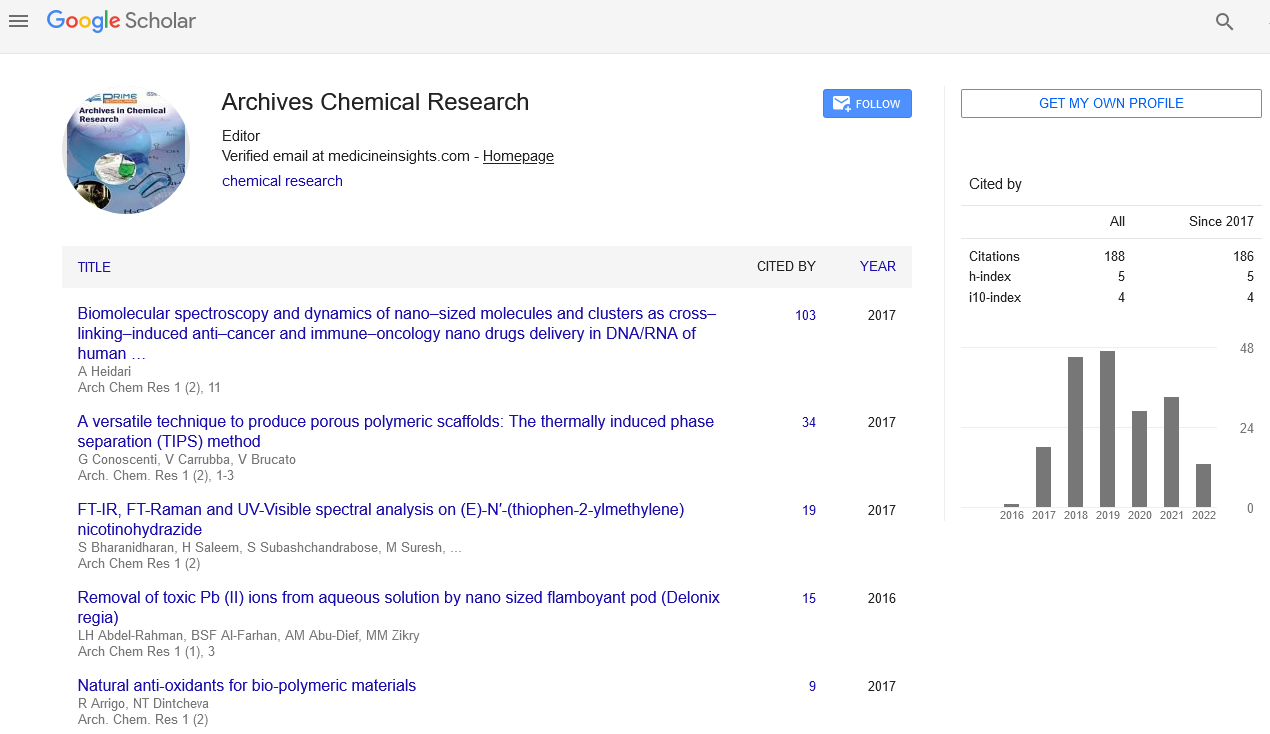Perspective - (2023) Volume 7, Issue 2
Benzene: A Fundamental Chemical with Diverse Applications
Basilio Alonso*
Department of Chemistry, University of Matanzas, Cuba
*Correspondence:
Basilio Alonso,
Department of Chemistry, University of Matanzas,
Cuba,
Email:
Received: 31-May-2023, Manuscript No. IPACRH-23-17088;
Editor assigned: 02-Jun-2023, Pre QC No. IPACRH-23-17088 (PQ);
Reviewed: 16-Jun-2023, QC No. IPACRH-23-17088;
Revised: 21-Jun-2023, Manuscript No. IPACRH-23-17088 (R);
Published:
28-Jun-2023, DOI: 10.21767/2572-4657.7.2.11
Introduction
Benzene is a simple yet crucial organic chemical compound
composed of six carbon atoms in a ring, each bonded to two
hydrogen atoms. Discovered by the English chemist Michael
Faraday in 1825, benzene has since become a cornerstone of
the chemical industry and is widely used across various sectors.
In this article, we delve into the properties, production, and
diverse applications of benzene. Benzene is a colorless liquid
with a distinct aromatic odor. The molecule’s unique hexagonal
structure and alternating double bonds give it exceptional
stability, making it less reactive than many other unsaturated
hydrocarbons. This aromaticity, as it is known, contributes to
benzene’s significance in both industrial and commercial applications.
Traditionally, benzene was obtained from coal tar,
a byproduct of coal processing. However, modern production
methods primarily involve catalytic reforming of petroleum
fractions, such as naphtha, to yield benzene along with other
valuable aromatic hydrocarbons like toluene and xylene. This
process accounts for the majority of industrial benzene production.
Description
Benzene serves as a precursor to numerous chemicals used
in the manufacture of plastics, synthetic rubbers, and fibers.
Through various chemical reactions, benzene can be transformed
into compounds like ethylbenzene, cumene, and cyclohexane,
all of which are vital intermediates in the production
of polyethylene, polystyrene, and nylon, among other materials.
Benzene’s solvent properties make it an essential component
in the formulation of many products, including paints,
varnishes, adhesives, and cleaning agents. Its ability to dissolve
various substances effectively makes it a preferred choice in
certain industrial processes and consumer products. Benzene
plays a significant role in the pharmaceutical sector. It is used
as a solvent in drug formulations and as a starting material for
the synthesis of several active pharmaceutical ingredients. Additionally,
benzene derivatives, such as phenol and aniline, find
applications in the production of pharmaceutical compounds.
In the past, benzene was used as an octane-enhancing additive
in gasoline. However, due to environmental and health concerns
associated with its toxic properties, its use in this context
has been significantly reduced or eliminated in many regions.
Benzene is integral to the production of synthetic rubber, particularly
styrene-butadiene rubber and polybutadiene rubber.
These rubber materials have numerous applications, including
tire manufacturing, footwear production, and various industrial
uses. Beyond its direct applications, benzene is also utilized
to produce a plethora of chemical intermediates. These intermediates
serve as essential building blocks in the synthesis of
various compounds across industries, ranging from flavors and
fragrances to pesticides and dyes. Benzene’s unique aromatic
properties make it a valuable reagent in organic chemistry
laboratories. It is frequently used as a solvent for reactions involving
aromatic compounds and as a starting material for the
synthesis of complex molecules.
Conclusion
Benzene’s significance in the chemical industry is unparalleled.
Its stability, aromatic properties, and versatility have made it
a fundamental compound with diverse applications. From its
role as a precursor to key petrochemicals and plastics to its use
as a solvent, cleaning agent, and pharmaceutical intermediate,
benzene’s impact on modern society is far-reaching. However,
it is essential to handle benzene with caution due to its hazardous
nature, and continuous efforts are made to minimize
exposure and ensure its safe use in various applications.
Citation: Alonso B (2023) Benzene: A Fundamental Chemical with Diverse Applications. Arch Chem Res. 7:11.
Copyright: © 2023 Alonso B. This is an open-access article distributed under the terms of the Creative Commons Attribution License, which permits unrestricted use, distribution, and reproduction in any medium, provided the original author and source are credited.

